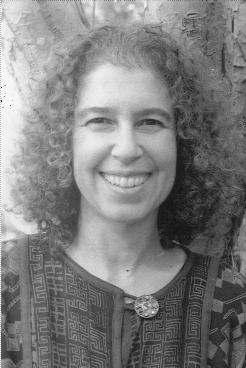 |
Meira Warshauer |
Shabbat with King David
| Instrumentation | string orchestra |
| Length | 3:30 |
| Difficulty | easy |
| Comments | The Jewish Sabbath (Shabbat) commemorates the seventh day, when God rested (Shavat) from the work of creation. It is a weekly observance in which Jews refrain from work and spend the day (from sundown Friday to sundown Saturday) in spiritual activities such as group prayer and study, communal reading from the Torah, and festive family meals that include rituals and singing. This twenty-five hour period is a weekly retreat into a sanctified time and its observance fulfills the fourth of the Ten Commandments, "Remember the Sabbath Day to keep it holy."
Shabbat with King David combines two melodies: a pentatonic melody on D and an E-minor melody. I associate the pentatonic melody with the biblical King David and his ecstatic dancing when bringing the Ark of the Covenant to Jerusalem. The melody came to me one Friday night in June when I found myself dancing and singing in the moonlight along the ocean shore, with the joyous spirit of King David. For the text, I was reminded of the words dovid melech yisrael chai (chai) kayam ("David King of Israel lives forever"), which are found in traditional songs about David. I was inspired later by the E-minor melody, along with words describing the Sabbath, hayom yom menucha ("today is a day of rest"). |
| Sources | The music may be ordered directly at 800.292.0639 (p), 919.677.1303 (f), or music.us@oup.com
For more information about this piece, please contact Phillip Cheah, Choral/Performance Promotions Assistant Manager:
Oxford University Press
198 Madison Avenue
New York, NY 10016
p: 212.726.6109 or 800.334.4249 x 6109
f: 212.726.6441
e: phillip.cheah@oup.com |
| Extras | |
| History | Shabbat with King David for string orchestra was commissioned by the Richland School District II Orchestra (Columbia, South Carolina), Pamela Hayes, Director, for its performance in Carnegie Hall on 15 June 1997. My daughter, Esther, was playing cello in this orchestra at the time. |
| Contributor | The composer, meira@musician.org, http://home.sc.rr.com/meirawarshauer |
| Other | |
Ahavah (Love)
| Instrumentation | 3 flutes (doubling on picc), 2 ob, Eng Hn, 2 cl., bass cl., 2 bsn, contrabsn, 4 hn, 3 tpt, 2 tbn, bass tbn, tuba, timp, 3 perc, harp, mexxo soprano soloist, SATB chorus, strings Perc instr: Marimba, xyl, vib, glock, sus. chimes, sleigh bells, sus cym, sizzle cym, crash cym, timbales, tomtoms, snare drum, bongos, tambourine, claves, wood blocks, castanets, guiro (wood), guiro (metal), 2 rainsticks, jawbone, maracas (regular), maracas (L.P.), whip |
| Length | 20 min. |
| Difficulty | medium (first movement medium difficulty, second movement more difficult, third movement easy) |
| Comments | AHAVAH (Love) uses a text in Hebrew and English from Deuteronomy 11:13-21 which is also found in the second paragraph after the SH'MA (Hear O Israel) in the traditional Jewish prayer book. The themes of the text are love for God and the rewards and consequences of following or turning away from God's commandments. I chose this text in part for its relevance to our threatened earthly environment and the role of morality and love in sustaining life.
The three-movement composition, about 20 minutes long, reflects contrasting sections of the text. The first movement, the longest of the three, portrays themes of love and fulfillment: "...and you will eat and be satisfied.." Here a mantra-like "ahavah" combines with a modal chant "v'ahavta" (and you shall love) and a more dramatic "sh'ma" (hear/listen) in an arch form over lush orchestral harmonies. The middle movement contains the warning, "Hishamru" (beware), and represents severity and chaos. A more strident musical language with chromatic harmonies and jagged percussive outlines portrays the consequences of turning away from the ommandments: "...you will perish swiftly from the land." The final movement restores order, "Place these words on your heart..." with a passacaglia-like pattern of repeating harmonies under a calm tonal melody as the "ahavah" theme returns, weaving through the simple texture.
The "ahavah" chant which appears in the two outer movements and gives the work its title was inspired by the composer's meditation under a giant silver maple tree.
1. Sh'ma v'ahavtah (Hear and love)
Sh'ma yisrael: Adoshem Elokeinu, Adoshem ekhad. (Hear, Israel: the Lord is our God, the Lord is One.) And you shall love the Lord your God with all your heart, with all your soul, with all your might. V'ahavta et Adoshem Elokekha v'khal l'vav'kha uv'khal nafsh'kha uv'khal m'odekha. Ahavah (love)...
2. Hishamru (Beware)
Hishamru lakhem pen yifteh l'vav'khem v'sartem va'avadtem elokim akherim v'hishtakhavitem lakhem. (Beware lest your hearts be swayed and you turn astray, and you worship alien gods and bow to them.)
3. V'samtem (Place these words)
Place these words upon your heart, and teach them dilligently unto your children. Bind them on your hand, place them between your eyes, speak of them at home or on the way. Ahavah... Write them on your doorposts and upon your gates. So that you may live, you and your children on the land which God gave to your ancestors. Ahavah... For as long as the heavens are over the earth. Ahavah... |
| Sources | Kol Meira Publications
3526 Boundbrook Lane
Colubmia, SC 29206
(803)787-4332
meira@musician.org
http://home.sc.rr.com/meirawarshauer |
| Extras | |
| History | Commissioned and premiered by South Carolina Philharmonic Orchestra, 1994. Last movement performed separately by Columbia Choral Society, 1994. |
| Contributor | The composer |
| Other | |
[ Catalog Home ]
[ Alphabetical ]
[ Contributors ]
[ Difficulty ]
[ Forces ]
[ Submissions ]
[ Submission Guidelines ]
|